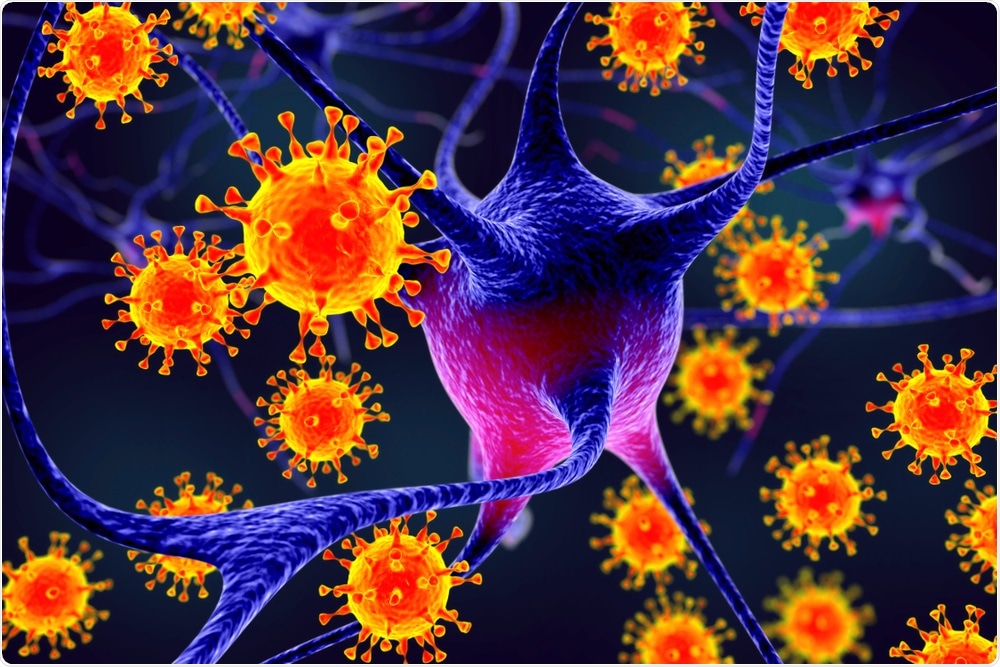A study published recently in eLife reports that synthetic antibodies developed with bacterial superglue have the potential to protect against deadly viruses.

Image Credit: Kateryna Kon/Shutterstock.com
The study outcomes offer a new method to prevent and treat infections of novel viruses and could be even used in therapeutics for other diseases.
Bunyaviruses, which are predominantly transmitted by insects like mosquitoes, could have disastrous effects on the health of animals and humans.
The Blueprint list of pathogens from the World Health Organization includes many such viruses, which can cause epidemics in humans in the absence of or insufficient countermeasures.
After vaccines, antiviral and antibody therapies are considered the most effective tools to fight emerging life-threatening virus infections. Specific antibodies called VHHs have shown great promise in neutralizing a respiratory virus of infants. We investigated if the same antibodies could be effective against emerging bunyaviruses.”
Paul Wichgers Schreur, Senior Scientist, Wageningen Bioveterinary Research
Antibodies naturally present in humans and many other animals are made of four chains, two heavy and two lighter chains. VHHs, which are the antigen-binding domains of heavy chain-only antibodies localized in camelids, are completely functional as a single domain.
This renders VHHs smaller and enables them to adhere to the pathogens in a manner human antibodies cannot. In addition, due to their single-chain nature, they are best suited as building blocks for the synthesis of multifunctional complexes.
Researchers vaccinated llamas with two prototypes of bunyaviruses called the Rift Valley fever virus (RVFV) and the Schmallenberg virus (SBV), to produce VHHs that target a vital portion of the infective machinery of the virus, the glycoprotein head. The SBV and RVFV VHHs were found to recognize different regions within the structure of the glycoprotein.
Upon examining whether VHHs were able to neutralize the virus in a test tube, it was found that single VHHs were unable to perform this function. The greater neutralizing effect was found against SBV when two different VHHs were combined together, but it was not found to be effective for RVFV.
The researchers used a “superglue” extracted from bacteria to combine multiple VHHs together as a single antibody complex, to address the issue.
The resulting VHH antibody complexes effectively neutralized both viruses; however, this happens only if the VHHs in the complex targeted more than one region of the virus glycoprotein head.
Studies conducted on mice with the most effective VHH antibody complexes revealed that these complexes avoided mortality. The number of viruses present in the blood of the treated mice drastically reduced when compared to untreated animals.
Antibodies must have the necessary effector functions of the natural human antibodies to work optimally in humans. Therefore, the researchers synthesized llama-human chimeric antibodies.
When a potential chimeric antibody was introduced into the mice before infection, the lethal disease was prevented in 80% of the animals, and treatment with the antibody after infection avoided death in 60% of them.
We’ve harnessed the beneficial characteristics of VHHs in combination with bacterial superglues to develop highly potent virus neutralizing complexes. Our approach could aid the development of therapeutics for bunyaviruses and other viral infections, as well as diseases including cancer.”
Jeroen Kortekaas, Study Senior Author and Senior Scientist, Wageningen Bioveterinary Research
Kortekaas is also a Professor of the Laboratory of Virology at the Wageningen University, The Netherlands.
Source:
Journal reference:
Wichgers Schreur, P. J., et al. (2020) Multimeric single-domain antibody complexes protect against bunyavirus infections. eLife. doi.org/10.7554/eLife.52716.